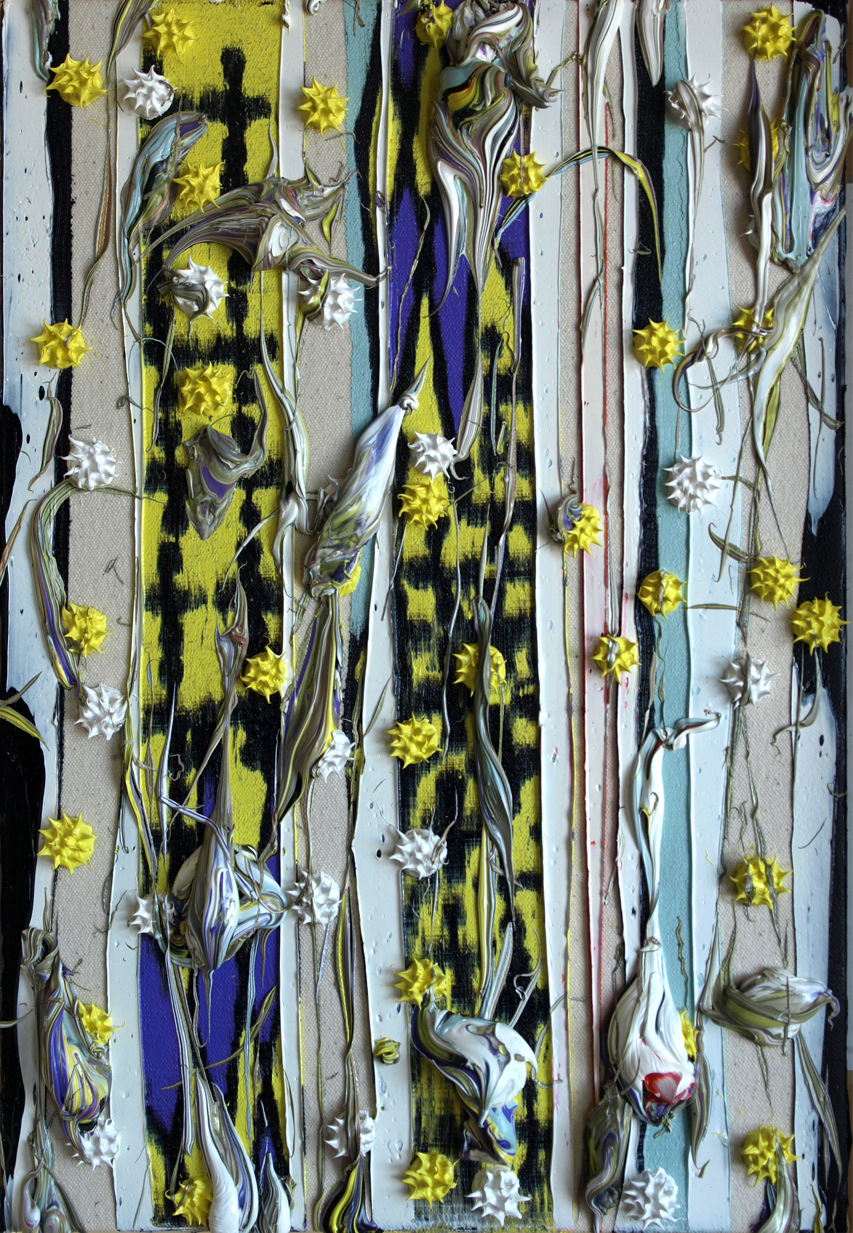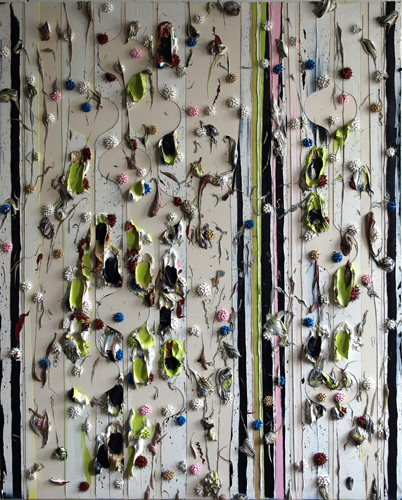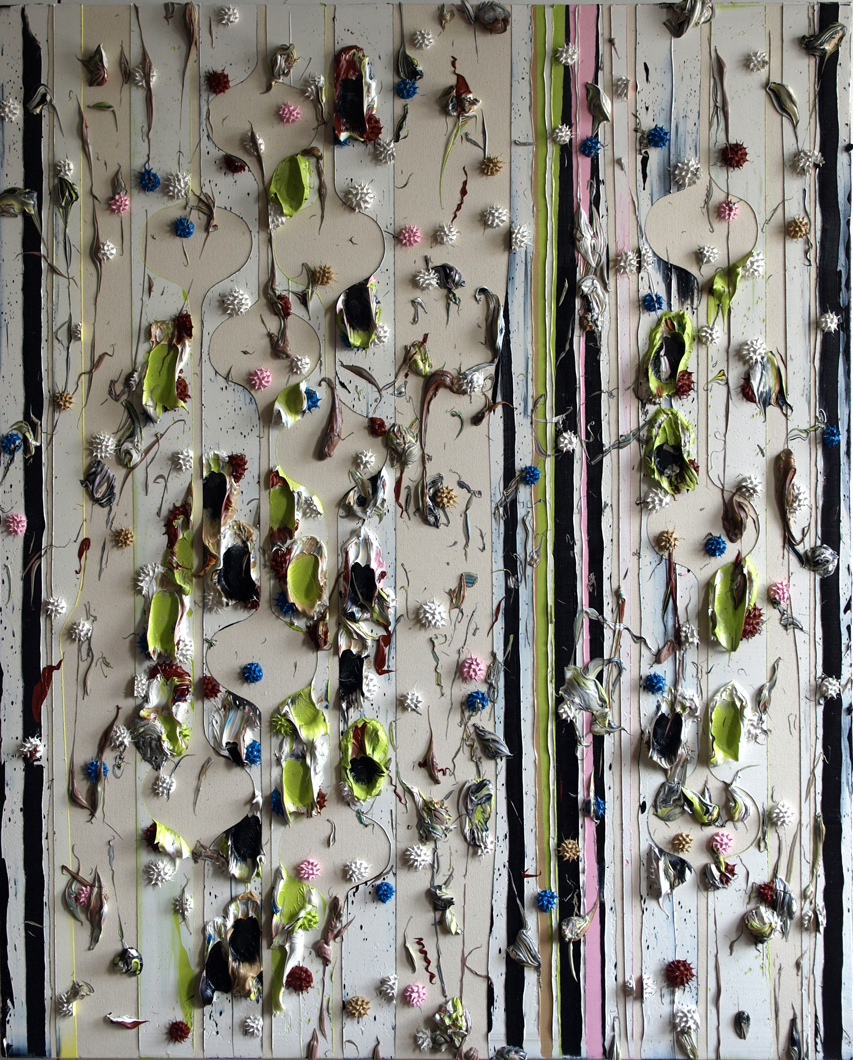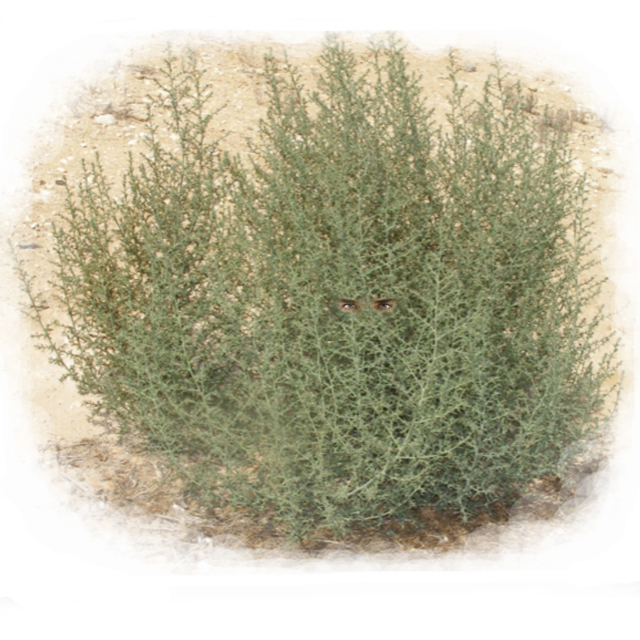May 28, 2014
Ear Worm: Blood Meridian
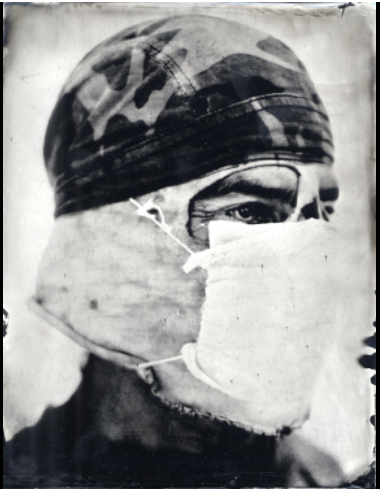
I've heard about the brutality of Cormac McCarthy's Blood Meridian and tended to shy away from it, fearing gratuitousness in the tell of the tale of war. I decided to take the plunge, wanting the metaphysical jolt that I appreciated from his No Country for Old Men.
After the listen, I started to google a little research. Slate's Noah Gallagher Shannon reveals the evolution from early drafts to finished novel. Just what and when was the Mexican-American War? Was it true that McCarthy was inspired by the diary of Samuel Chamberlain? (Yes, quite a bit.) Just who was the Glanton Gang?
After the war in summer 1849, Glanton and his gang were hired in a nominally mercenary operation by Mexican authorities, to track down and kill dangerous bands of Apache Indians in northern Mexico and what is now part of the Southwest. To earn more money, the Glanton gang began murdering and scalping peaceful agricultural Indians and Mexican citizens alike to claim under the bounty for scalps. The state of Chihuahua put a bounty on the heads of the gang, declaring them outlaws by December 1849.[1] Chihuahua authorities drove the gang out to Sonora where they also wore out their welcome and moved into what is now Arizona....
In Arizona, Glanton's men killed some Quechan natives and took over operating their ferry on the Gila River in Arizona, which transported migrants to the California Gold Rush. They sometimes killed the Mexican and American passengers to take their money and goods.[1] A band of Quechan led by Caballo en Pelo killed and scalped Glanton and most of his gang in retaliation. They reclaimed the tribe's ferry business.[5] The California state government recruited men for a militia and directed the ill-fatedGila Expedition military operation against the Quechan tribe.
***

You can read Life Magazine's 1956 feature, Chamberlain's Mexican War Diary, quite an experience to scroll through the pages and period ads as you read through the piece. (Sam Chamberlain is an "Outsider" Artist!, it's a wonder to see the paintings!)
***
Confronting the horror of colonial aggression. The displacement of American Indians is indeed a stain in our history (everyone sings mea culpas), but stains tend to spread and this history includes all of the Americas. Including Mexico.
I Wikipedia: The Apache-Mexico Wars. I discovered that the first gold rush was for scalps that were paid with coin.In 1835, the government of Sonora put a bounty on the Apache which, over time, evolved into a payment by the government of 100 pesos for each scalp of a male 14 or more years old. Later, Chihuahua offered the same bounty for males plus a bounty of 50 pesos for the capture of an adult female and 25 pesos for a child under 14. Bounty hunters were also allowed to keep any Apache property they captured. The bounty for one Apache male was more than many Mexicans and American workers earned in a full year.
It is unclear, however, whether the scalp bounty was actually paid during the first few years.
So, just when was the time frame and context for what we call the Gold Rush?
The first significant gold rush in the United States was in Cabarrus County, North Carolina (east of Charlotte), in 1799 at today's Reed's Gold Mine.[3] Thirty years later, in 1829, the Georgia Gold Rush in the southern Appalachians occurred. It was followed by the California Gold Rush of 1848-55 in the Sierra Nevada, which captured the popular imagination. The California gold rush led directly to the settlement of California by Americans and the rapid entry of that state into the union in 1850. The gold rush in 1849 stimulated worldwide interest in prospecting for gold, and led to new rushes in Australia, South Africa, Wales and Scotland.
Back to Wikipedia's Mexican-American War:
The Mexican-American War, also known as the Mexican War, the U.S.-Mexican War, the Invasion of Mexico, the U.S. Intervention, or theUnited States War Against Mexico, was an armed conflict between theUnited States and the Centralist Republic of Mexico (which reestablished its 1824 federal constitution during the war, becoming the Second Federal Republic of Mexico) from 1846 to 1848 in the wake of the 1845 U.S.annexation of Texas, which Mexico considered part of its territory despite the 1836 Texas Revolution.
Combat operations lasted a year and a half, from the spring of 1846 to the fall of 1847. American forces quickly occupied New Mexico and California, then invaded parts of Northeastern Mexico and Northwest Mexico; meanwhile, the Pacific Squadron conducted a blockade, and took control of several garrisons on the Pacific coast further south in Baja California. Another American army captured Mexico City, and the war ended in a victory for the United States.
***
(Source for image at top of blogpost, Mexican vigilante)
May 27, 2014
Ear Worm: Paradise Lost

Links:
Prof. William D. Kolbrener's intro at Bar - Ilan University, it takes a lot of chutzpah to imagine and tell the back story of the Judeo-Christian world... a Christian Midrash.
Darkness Visible
Of Mans First Disobedience, and the Fruit
Of that Forbidden Tree, whose mortal tast
Brought Death into the World, and all our woe,
With loss of EDEN, till one greater Man
Restore us, and regain the blissful Seat,
Sing Heav'nly Muse, that on the secret top
Of OREB, or of SINAI, didst inspire
That Shepherd, who first taught the chosen Seed,
In the Beginning how the Heav'ns and Earth
Rose out of CHAOS: Or if SION Hill
Delight thee more, and SILOA'S Brook that flow'd
Fast by the Oracle of God; I thence
Invoke thy aid to my adventrous Song,
That with no middle flight intends to soar
Above th' AONIAN Mount, while it pursues
Things unattempted yet in Prose or Rhime.
And chiefly Thou O Spirit, that dost prefer
Before all Temples th' upright heart and pure,
Instruct me, for Thou know'st; Thou from the first
Wast present, and with mighty wings outspread
Dove-like satst brooding on the vast Abyss
And mad'st it pregnant: What in me is dark
Illumine, what is low raise and support;
That to the highth of this great Argument
I may assert th' Eternal Providence,
And justifie the wayes of God to men.
May 26, 2014
Each Direction Without End

Each Direction Without End
2014
#451
18"x12"

May 24, 2014
James Jarvaise
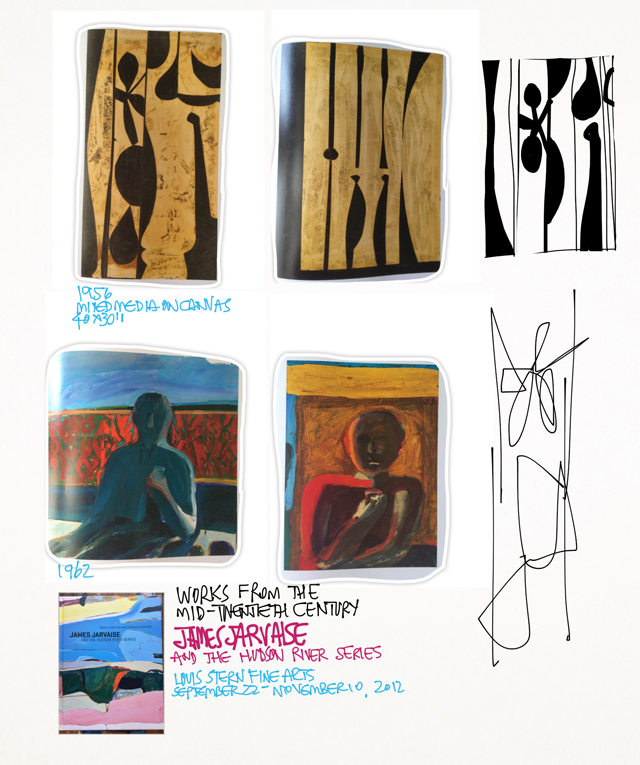

When I was visiting LA at the beginning of the month to celebrate the opening of Michael Kohn's new gallery space/building, Henry Taylor invited me to stay at his place that week. Henry is a gracious host, he's very social and a stream of stories could be told about my time there, but one shines particularly bright. Henry was eager to talk about his first art professor back in the day when he was in community college, James Jarvaise.
Like most artists, Henry started drawing and painting early as a kid, gauging himself at that time by the skill set -set by his childhood friends the Hernandes Brothers. He found work in his twenties as a hospital orderly at Camarillo State Mental Hospital, taking classes in art at night. Jarvaise was the guy who introduced Henry to modern and contemporary art, dropping names such as Georg Baselitz and Max Beckmann to him for the first time. Jarvaise widened his horizons, finally insisting that Henry enroll into CalArts, which was the smartest advice, street-wise, that a mentor could bestow to his charge.
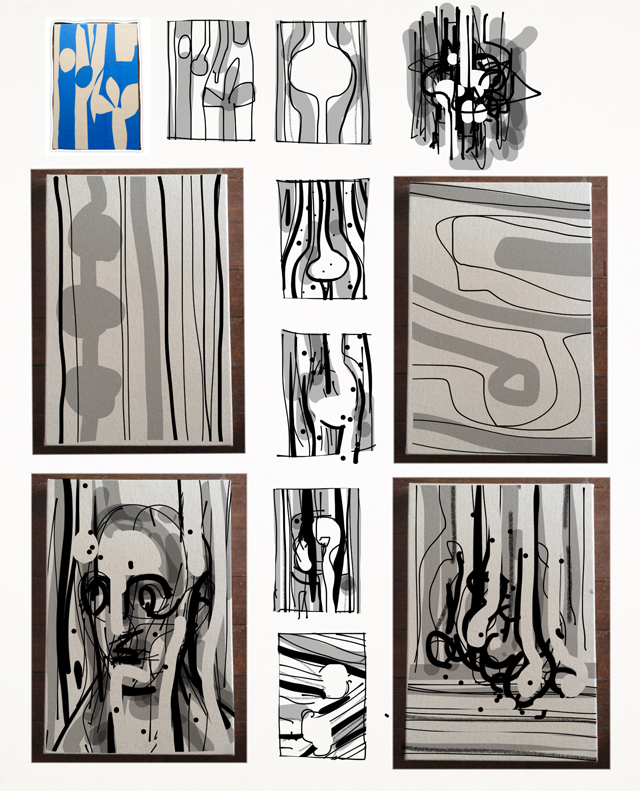
Henry showed me a catalog of an exhibition called 16 Americans, curated by Dorothy C. Miller that benchmarked Jarvaise into the company of artists that included Jay de Feo, Jasper Johns, Ellsworth Kelly, Alfred Leslie, Louise Nevelson, Robert Rauchenberg, Frank Stella... (If you haven't done so already, be sure to click the link to Miller's obituary above, it's quite a portrait of her and the birth of MoMA). Despite this auspicious beginning, Jarvaise's public career faded into a 40 year obscurity, even though he had been producing continuously, and according to Henry, with a remarkable intensity in his studio his entire life.
The names of the famous in art history are but a formidably small fraction of the population of artists who must otherwise inevitably reconcile themselves with varying degrees of oblivion. The catalog that the Los Angeles gallery Louis Stern Fine Art produced (who appears to possess the rights to represent his estate when that time comes) seems to be a Hail Mary Pass so save an artists' career at the last moment. And what had led to such a desperate play? Several aspects stand out. Jarvaise chose to live in Southern California precisely at a time when the art historical narrative crystalized and centralized in New York City. Jarvaise relied on national competitions as a machine for recognition, a practice that had faded in popularity in the 60's. His gallery in Los Angeles in the 50's and 60's was Felix Landau, his primary representation. Jarvasie over-relied on his gallery for the development of his career, neglecting the forging of contacts outside of LA, leaving all professional development to his primary gallery, giving them little to work with as a result. One could say that Jarvaise retreated into his teaching, but he also raised a family of five children, created a homestead eventually numbering several structures on an acre of land. He created a kind of personal paradise typical to Southern California, but what about a professional paradise? Well, some would say the profession be damned. Outsider artists prove to the art world that personal conviction and creative integrity doesn't need to be supported by public recognition.
And yet, most of us (artists) yearn for recognition. While most of us say that we are happy to fell trees in the forest alone, most of us would also appreciate the report of the sound by others. There is a gnarled labyrinth of examples and counter examples to question whether the truth of beauty can be verified either by the artist or the audience alone. But still, I marvel at the once-insider artist who has gone outsider, even if only several degrees separated from the ultimate standard of a Col. Kurtz. I agree with Henry in that all we want to do is to paint and to find a home for each painting in the possessions of an adoring collector. Everything else is gravy.
As for Jarvaise's paintings, I can see his influence in Henry's work. The subject and content of his painting is all Henry, but I see the traces of touch and mass and color of Ab Ex that Jarvaise must have imparted to young Henry. In one of the many stories Henry told me about Jarvaise, he described his anxiety of facing critique at CalArts, that he would fill his car full of his paintings from his grad school studio and drive down to Oxnard and petition Jarvaise for a critique, his paintings leaned up against his car in an impromptu street side exhibition. Jarvaise would squint his eye and scrutinize color and composition, advising certain tweaks here and there, fortifying Henry for what was to come.
May 15, 2014
Michael Kohn's New Gallery
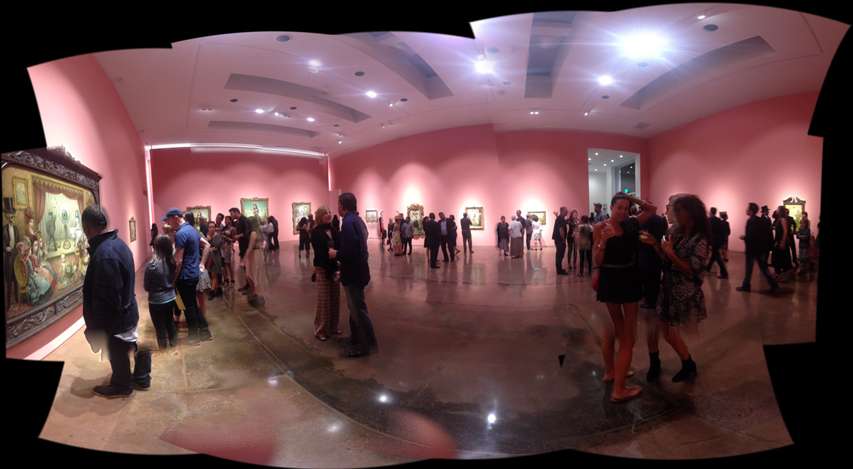
Michael Kohn's new gallery building opened this month with a show of Mark Ryden's paintings. Ryden did put on a splash, heightening the carnivalesque stosphere with a squad of friends dressed in costumes in the theme of the "Gay 90's", the center of gravity of his paintings, the effect of which bordered on performance.
After a year of investment and problem solving, Michael and his team enjoyed a well deserved homecoming, a reinvestment of hard earned assets into a passionate vision. Construction is always a dramatic event, every architectural creation is always larded with surprising problems with patience and budget pushed to the limit. Located in the center of Los Angeles on Highland Avenue and Lexington, the new gallery is beautiful. Michael has put all his chips on the table and the new space is wonderfully proportioned and spacious, almost-but not too large, a space that stages artwork on a museological scale that concentrates the minds of his artists. Isn't this what every gallerist should aspire to?
May 14, 2014
May 11, 2014
Was it Oblivion? Dissolution?
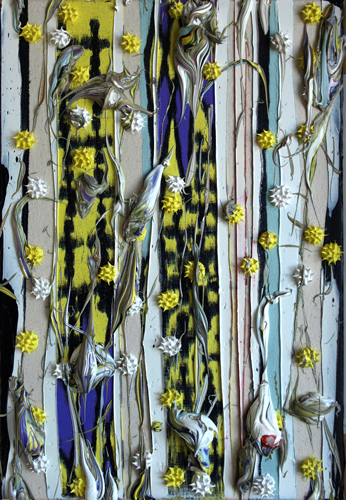
Was it Oblviion? Dissolution?
2014
#450
18"x12"
